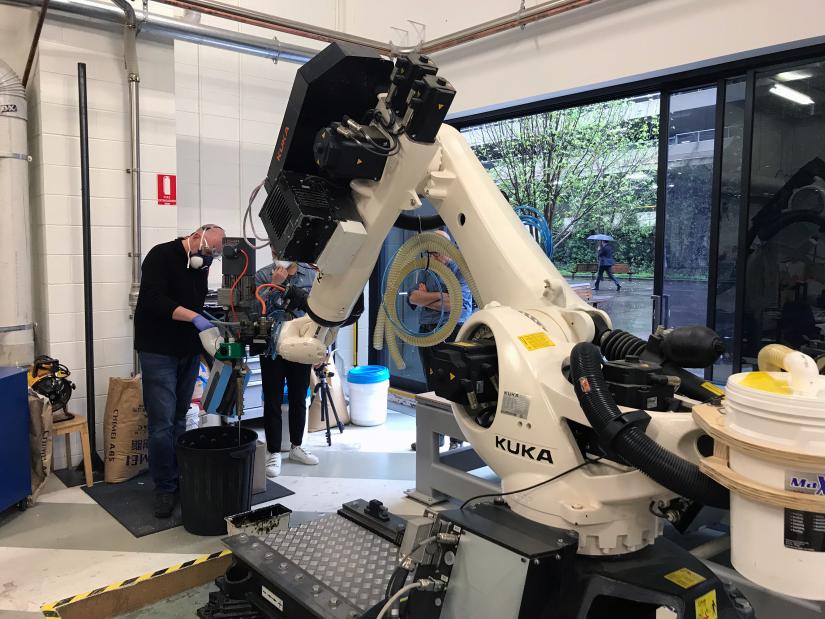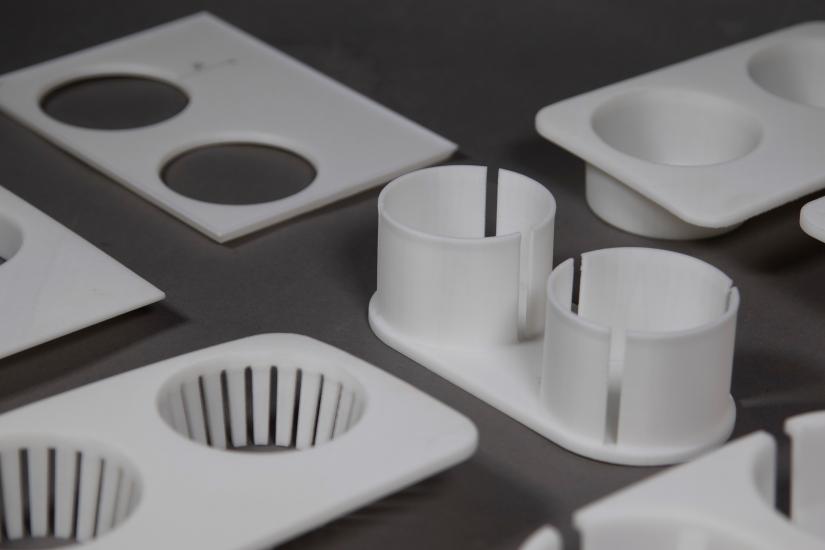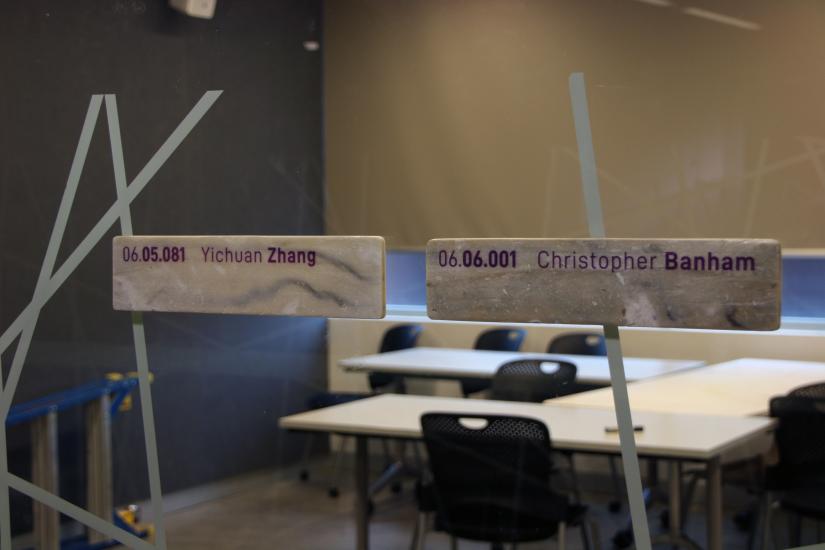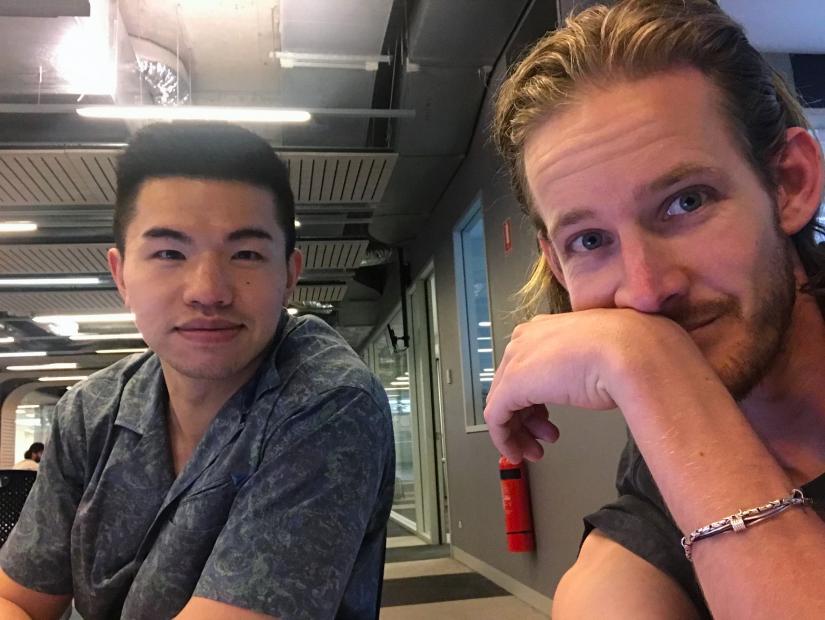Closing the loop on waste
One man’s trash? It’s another man’s treasure, particularly if that man is Master of Design student Chris Banham.
Banham, along with project partner Eric Zhang Yichuan, is using design to tackle the pressing issue of problem waste – specifically, that of expanded polystyrene, or EPS.
An estimated 12,000 tonnes of EPS winds up in landfill every year. Through their project, Banham and Yichuan sought to interrupt this process by developing a closed-loop recycling process that could transform EPS into usable objects.

An estimated 12,000 tonnes of EPS winds up in landfill every year. Photo: Chris Banham.
The students started by experimenting with EPS by transforming the expanded material into small pellets, using machines located on UTS campus. In the UTS Advanced Fabrication Lab, they fed the pellets into a 3D printer, producing a series of EPS-based printed objects that gave the waste product a new lease on life.

Feeding EPS pellets through a 3D printer in the UTS Advanced Fabrication Lab. Photo: Chris Banham.
The aim of the project was to create a closed-loop recycling system that kept the recycled EPS products out of landfill. The first step – producing the objects – was a resounding success: Banham and Yichuan created a coffee tray that could be used to transport a variety of different cup sizes, as well as 3D-printed office signs and others that were the result of pouring liquid EPS into a basic mould.
The work highlighted the inherent value of ‘waste’ materials like EPS: despite having no monetary value, their potential to be transformed – at low cost – into other objects gives them a value beyond an economic bottom line. But when it came to making the products part of a closed-loop system, things quickly became more complex.

Banham and Yichuan used EPS to create a coffee tray that could be used to transport a variety of different cup sizes. Photo: Chris Banham.
“If you’re trying to create a closed-loop system, the idea is that you don’t want any of the material to be leaving the system. We quickly discovered that portable, moveable products like the coffee tray are easy to throw out,” Banham says.
“The office sign was a better fit – it’s attached to a wall, a staff member might be in that office for a couple of years. It’s quite easy to create a system that says if you’re getting a new office sign, you take your old one to this drop-off place, and then we can break that down and create a new office sign after that.”

Office signs offered a better solution for creating a closed-loop recycling system. Photo: Chris Banham.
The project helped Banham and Yichuan untangle the challenges of establishing an effective recycling system, and it also demonstrated the potential of new technologies like 3D printing to deliver new opportunities for tackling waste. However, for Banham, it also highlighted the extent to which recycling processes only delay the inevitable: the fact that plastic products can only be recycled a finite number of times means that no closed-loop system is truly closed.

Master of Design students Chris Banham and Eric Zhang Yichuan. Photo: Chris Banham.
“It’ll always end up in landfill,” Banham says.
“We should be looking for ways to stop that from happening in the short-term, but then we should also be looking for ways at the same time of phasing out our use of it entirely, because you don’t want to perpetuate this dependence on fossil-fuel-based material.
“Success for us is this system doesn’t exist anymore.”
